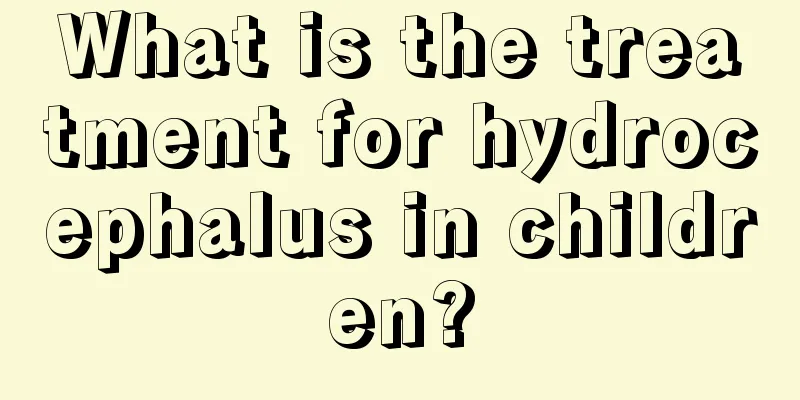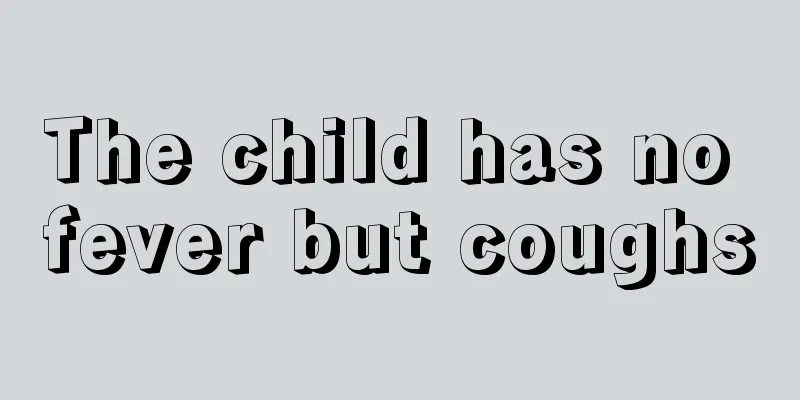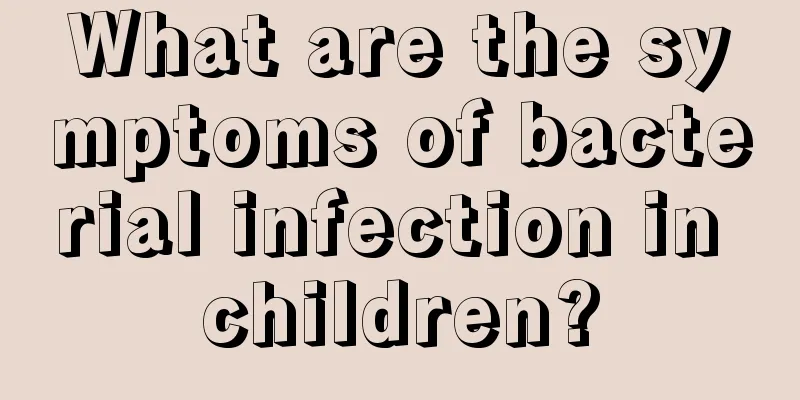What is the treatment for hydrocephalus in children?

|
Hydrocephalus is a disease that can occur in people of all ages. Some children will develop hydrocephalus. There are many causes of this disease. It may be caused by congenital brain development abnormalities. In addition to this reason, there are also non-developmental reasons. For example, a child may have an intracranial tumor or a cyst on the head, which can cause hydrocephalus. So how should hydrocephalus be treated in children? First, drug treatment (1) Drugs that inhibit cerebrospinal fluid secretion: such as acetazolamide (acetazolamide), 100 mg/(kg?d), reduces the secretion of cerebrospinal fluid by inhibiting the Na+-K+-ATPase of choroid plexus epithelial cells. (2) Diuretics: furosemide, 1 mg/(kg?d). The above methods should be the first choice for children under 2 years old with mild hydrocephalus, and about 50% of patients can control the disease. (3) Osmotic diuretics: sorbitol and mannitol. The former is easily absorbed in the intestine and is non-irritating, with a half-life of 8 hours and a rate of 1 to 2 g/(kg?d). This drug is mostly used for moderate hydrocephalus as a short-term treatment to delay surgery. Traditional Chinese medicine uses pungent, bitter, warm and fragrant Chinese herbs to formulate prescriptions, administer the drugs through the nose and mouth, and combine external and internal use. Pungent and dispersing properties can dredge the Qi mechanism and allow the Qi and blood to flow smoothly. Bitter and warm properties can remove turbidity and evil and dredge the meridians, accelerating the flow of Qi and blood to nourish the brain. Meanwhile, the fragrance can enter the brain through the nose to open the brain orifices and refresh the mind. It can eliminate turbid evil, open up the brain orifices, stretch the mind, and restore the normal function and health of the brain to treat hydrocephalus. This method is called "opening the orifices and guiding water method". In addition, in addition to drug treatment, for acute hydrocephalus caused by ventricular hemorrhage or tuberculosis and purulent infection, repeated lumbar puncture to drain cerebrospinal fluid can be combined with the method, which has a certain effect. Anyone attempting to control hydrocephalus with medications should have close observation of neurological status and serial examinations of changes in ventricular size. Drug treatment is generally only suitable for mild hydrocephalus. Although some infants or children do not have symptoms of hydrocephalus, the patients may have progressive ventricular enlargement. Although some children have the ability to compensate, it will ultimately affect the development of the children's nervous system. Drug therapy is generally used to temporarily control the development of hydrocephalus before shunt surgery. Second, non-shunt surgery In 1918, Dandy first used the method of removing the choroid plexus of the lateral ventricle to treat hydrocephalus. However, since the production of cerebrospinal fluid is not limited to the choroid plexus tissue, and the choroid plexus of the third and fourth ventricles was not removed, the effect of the operation was uncertain, so it was discontinued. Third ventriculostomy is a procedure that creates a direct channel between the floor or terminal plate of the third ventricle and the interpeduncular cistern to treat cerebral aqueduct obstruction. There are craniotomy and percutaneous puncture methods, the former was first performed by Dandy. During the operation, the floor of the third ventricle is punctured to connect it to the interpeduncular cistern, or the terminal plate is removed to form a direct fistula between the third ventricle and the subarachnoid space. The percutaneous puncture method was first used by Hoffman et al. (1980) to perform a directional incision of the third ventricle floor. During the operation, ventriculography was first performed to show the third ventricle floor. A 10 mm diameter hole was drilled in the skull in front of the coronal suture, and the puncture needle was introduced using the stereotactic method. When the third ventricle floor was pierced, the contrast agent could be seen flowing into the interpeduncular cistern, basal cistern and spinal canal. Since these patients lack cerebrospinal fluid in the subarachnoid space and cisterns, the fistula cannot be made large enough during surgery, and the cerebrospinal fluid circulation is often insufficient after surgery, and the hydrocephalus cannot be fully relieved. Currently, this method is not widely used. Third, ventricular shunt Torkldsen (1939) first reported the use of rubber tubes to perform lateral ventricle-cistern shunt surgery, which was mainly suitable for midline ventricular tumors and aqueductal occlusive hydrocephalus. Later, patients with dysplastic cerebral aqueduct underwent dilation surgery, using a rubber catheter to be inserted from the fourth ventricle upward to the narrow cerebral aqueduct. Since the surgery damaged the gray matter around the aqueduct, the surgical mortality rate was high. Internal shunt surgery is the shunt between the lateral ventricle and the sagittal sinus. This method is theoretically consistent with the physiology of cerebrospinal fluid circulation, but is not widely used in practice. (1) Extraventricular shunt: The principle of this surgical method is to drain cerebrospinal fluid into a cavity in the body that can absorb cerebrospinal fluid. Currently, the commonly used methods for treating hydrocephalus include ventriculoperitoneal shunt, ventriculoatrial shunt and ventriculo-lumbar subarachnoid shunt. Since ventriculoatrial shunt requires the shunt tube to be permanently placed in the heart, it interferes with the physiological environment of the heart and has the risk of causing cardiac arrest and some other cardiovascular complications. It is currently only used for patients who cannot undergo ventriculoperitoneal shunt. Spinal subarachnoid-ventricular shunt is only suitable for communicating hydrocephalus. Ventriculoperitoneal shunt is still the preferred method. In addition, previous literature reports that methods such as ventriculothoracic shunt, ventricle-ureter, bladder, thoracic duct, stomach, intestine, mastoid and lactiferous duct shunt have no clinical application value and have been abandoned. (2) The ventricular shunt device consists of three parts: ventricular tube, one-way valve, and distal tube. But the spinal subarachnoid-peritoneal shunt is a subarachnoid tube. In recent years, some new shunt pipes are equipped with additional devices such as anti-siphon, liquid storage chamber and automatic opening and closing valve. (3) Surgical method: The patient lies on his back with his head turned to the left. The back is raised to expose the neck. An incision is made on the head, starting from 4 to 5 cm above the right auricle to 4 to 5 cm backward. A 2 cm long incision is made on the flat part of the skull. The incision is pulled open with a retractor, and a hole is drilled. The ventricular tube is inserted from the occipital angle to the frontal angle, about 10 to 12 cm long. It is generally believed that shunt placement in the frontal horn is ideal because the frontal horn is wide and has no choroid plexus, and the pressure gradient of the contralateral cerebrospinal fluid flowing through the foramen of Monor to the shunt is small. The reservoir or valve is placed under the scalp and fixed, and the distal tube is inserted from the subcutaneous tissue of the neck and chest to the abdominal wall. The abdominal incision can be made 2.5 to 3.0 cm lateral to the midline of the middle or lower abdomen or lateral to the rectus abdominis muscle. Place the distal lateral tube into the abdominal cavity. In addition, the abdominal wall is punctured with a trocar and the shunt tube is inserted into the abdominal cavity from the outer sleeve. The upper end of the abdominal tube passes through the subcutaneous tissue beside the sternum to reach the neck, where it connects to the valve tube. Contraindications: ① Patients with intracranial infection that cannot be controlled by antibiotics; ② Patients with cerebrospinal fluid protein exceeding 50mg% or fresh bleeding; ③ Patients with abdominal inflammation or ascites; ④ Patients with infection of the skin of the neck and chest. |
<<: What are the dangers of children eating too much salt?
>>: Normal values of six sex hormones in children
Recommend
Symptoms of milk allergy in newborns and ways to prevent allergies
It is not easy for newborns to be allergic to mil...
How to supplement zinc and calcium deficiency in children
The development of children in childhood is a top...
What causes children to grind their teeth?
Medically speaking, it is normal for children to ...
Can children's growing pains be relieved by soaking their feet more often?
Growing pains can be said to be a problem that ch...
What are the treatments for cerebral palsy in children?
Cerebral palsy is a disease that endangers human ...
What medicine should be used for baby's athlete's foot
If a baby develops some illness, most of them are...
What's the matter with the rash on the baby's palms?
The baby's skin is the softest and most fragi...
Can children eat shrimps if they have a cough?
Coughing is a very uncomfortable stage, so many p...
What to do if your child has oily hair?
Oily hair is very common in life, especially for ...
Four-month-old baby's feet sometimes shake
As the baby grows, it is necessary to carefully o...
Why do children's teeth turn yellow?
It is said that teeth are bones. Once our body la...
Be careful of these problems when having febrile convulsions in children!
Fever is normal. Fever in young children may caus...
What are the benefits of swimming for babies
Although babies are young, they often need to swi...
What to do if a child has a minor burn?
Scalding is everywhere. Many children often do no...
Reasons why babies don't sleep well at night
I believe that every parent hopes that their baby...









